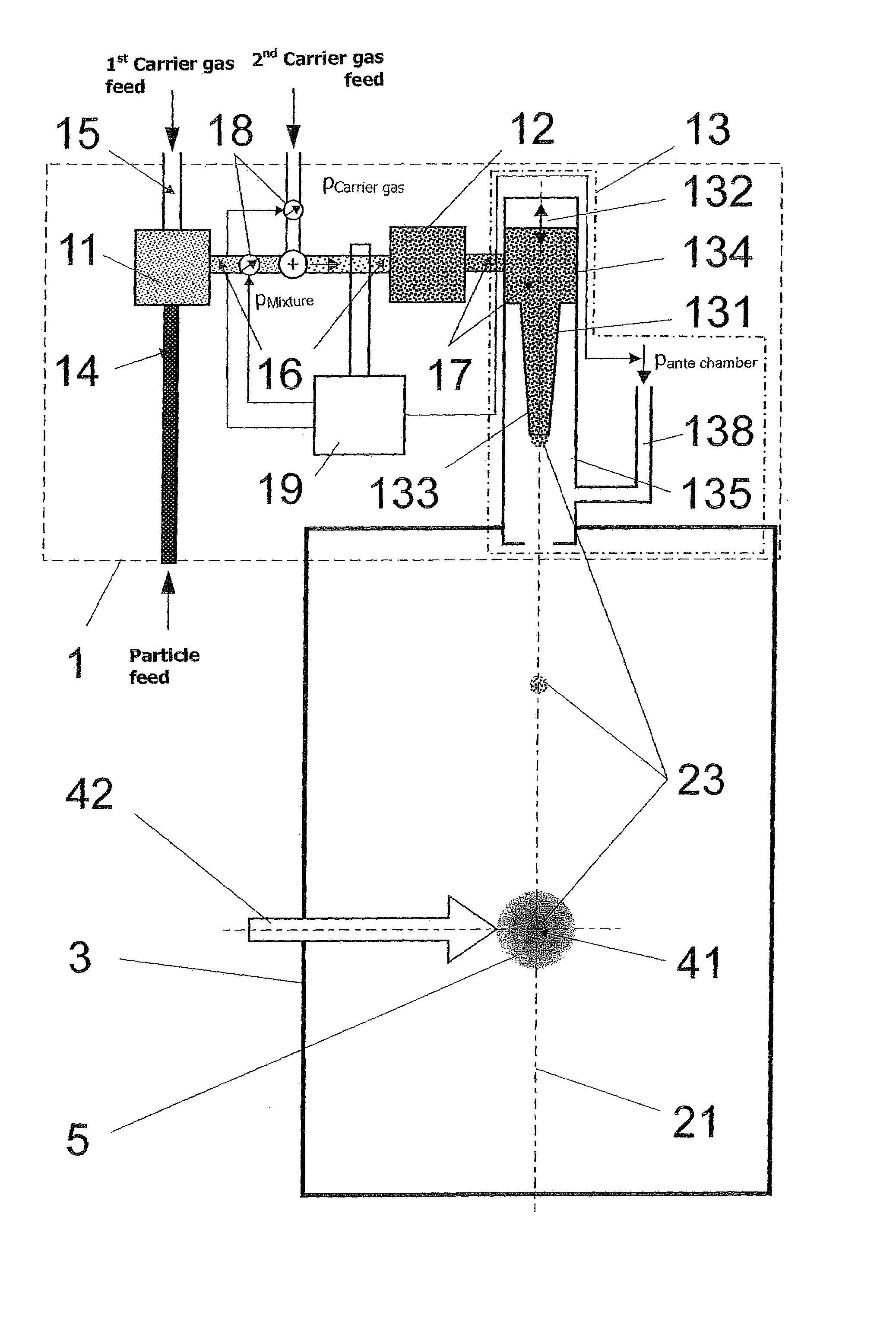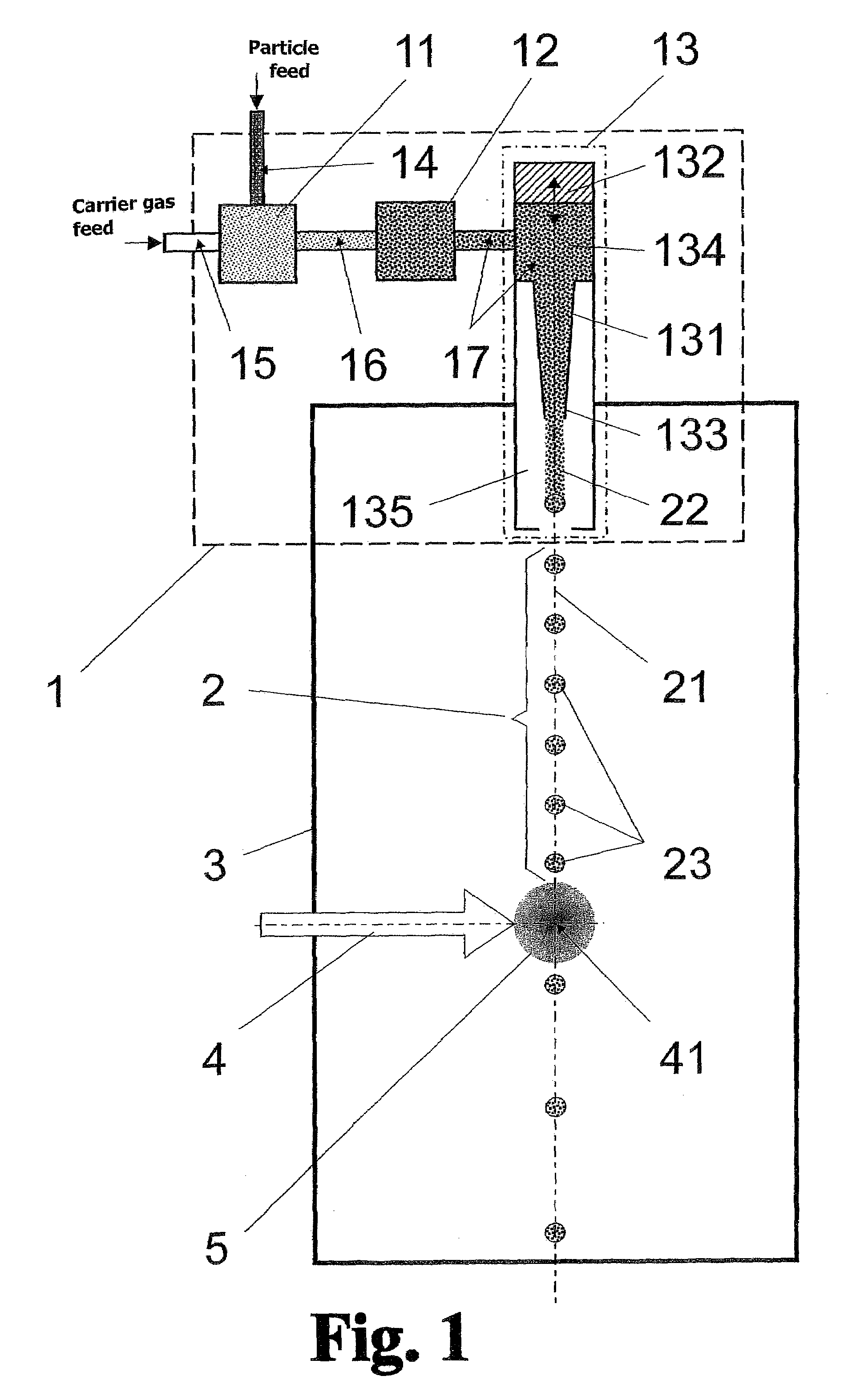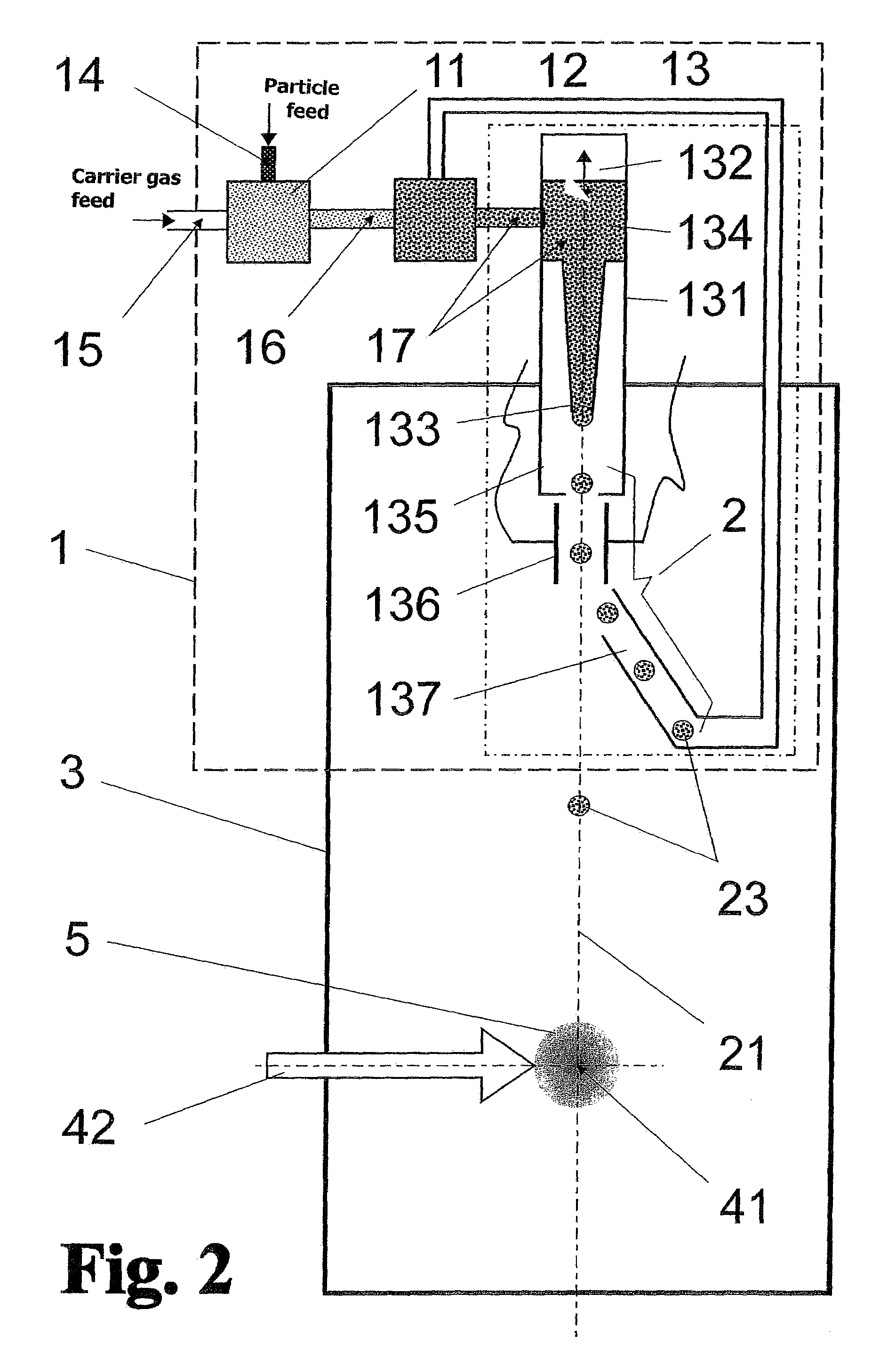Arrangement for generating extreme ultraviolet radiation from a plasma generated by an energy beam with high conversion efficiency and minimum contamination
a technology of energy beam and plasma, which is applied in the direction of optical radiation measurement, instruments, therapy, etc., can solve the problems of undesirable out-of-band radiation components, insufficient efficiency of clean fuels (target materials such as xenon), and all carrier liquids or solvents known for this purpose contain component parts, and achieve the effect of long life of the injection devi
- Summary
- Abstract
- Description
- Claims
- Application Information
AI Technical Summary
Benefits of technology
Problems solved by technology
Method used
Image
Examples
Embodiment Construction
[0044]The EUV radiation source has a target feed device 1 which, as is shown schematically in FIG. 1, basically contains a mixing chamber 11, a liquefaction chamber 12 and an injection unit 13. The injection unit 13 has a droplet generator 131, a pressure modulator 132, a target nozzle 133, and a nozzle chamber 134.
[0045]Solid particles 14 comprising metals or metal compounds, e.g., tin or lithium (or preferably also their oxides, SnO, SnO2, LiO, LiO2) which emit efficiently in the EUV spectral region (around 13.5 nm) and a clean (i.e., free from emitting particles) carrier gas 15, e.g., noble gases or nitrogen, are combined and mixed in the mixing chamber 11. The resulting particle-containing mixture 16 is fed to the liquefaction chamber 12, wherein liquefaction is carried out at low temperatures (T1 bar. Sn particles (individual particles of at most 10 μm in size) are preferably mixed in to achieve a high efficiency of EUV generation (≈3%). However, mixtures of other elements (e.g...
PUM
 Login to View More
Login to View More Abstract
Description
Claims
Application Information
 Login to View More
Login to View More - R&D
- Intellectual Property
- Life Sciences
- Materials
- Tech Scout
- Unparalleled Data Quality
- Higher Quality Content
- 60% Fewer Hallucinations
Browse by: Latest US Patents, China's latest patents, Technical Efficacy Thesaurus, Application Domain, Technology Topic, Popular Technical Reports.
© 2025 PatSnap. All rights reserved.Legal|Privacy policy|Modern Slavery Act Transparency Statement|Sitemap|About US| Contact US: help@patsnap.com



